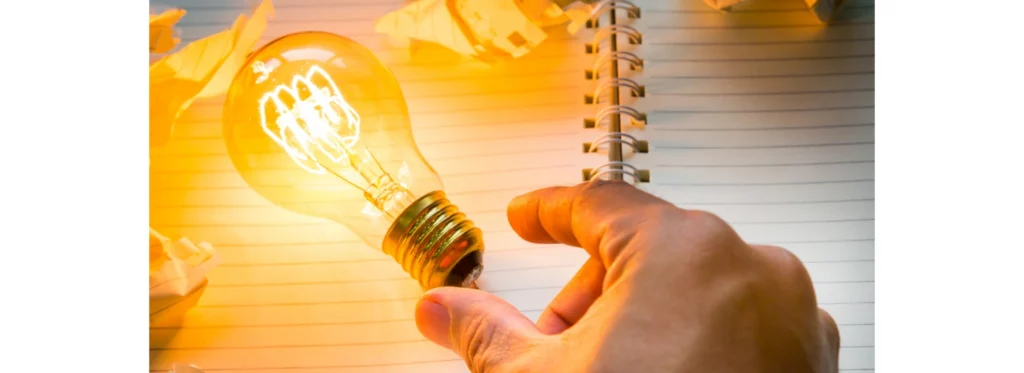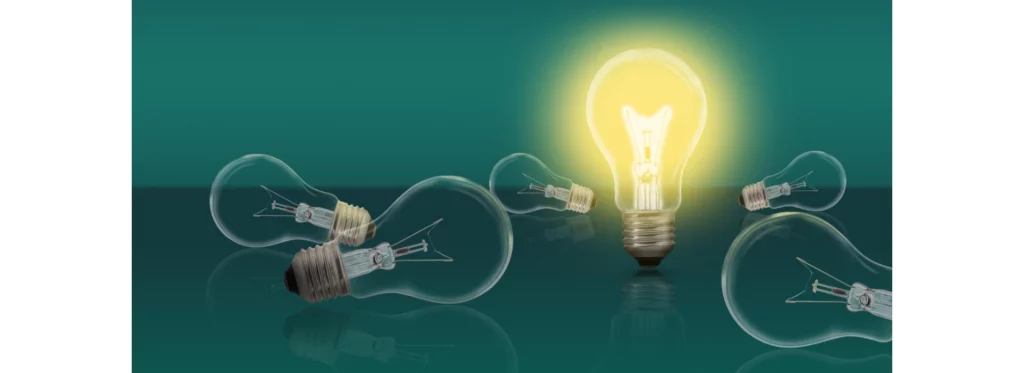Energy efficiency is an important component of our overall economy and our wallet.
Although it's a nebulous quantity, the return on investment is roughly constant, and therefore, energy efficiency is beneficial to the economy and our wallets.
It is also one of the biggest drivers of load growth. Read on to learn more about its benefits. This article provides some key facts about electricity efficiency. Its benefits are obvious:
What is Electricity Efficiency?
Electricity efficiency, also called energy efficiency, is about using electricity wisely to achieve the same functionality with less energy.
The goal is to optimize output while reducing input, which helps reduce energy waste and support sustainability.
Efficient electricity usage in homes is crucial for responsible energy use and reducing environmental impact.
This involves various measures to optimize consumption without sacrificing comfort and convenience.
These measures include using energy-efficient appliances, improving insulation and weatherization, using LED bulbs, and incorporating smart home technologies for automated energy management.

How Does Electricity Efficiency Work?
Electricity efficiency is a multifaceted approach aimed at reducing energy consumption in homes while ensuring comfort and productivity are not compromised.
This comprehensive strategy involves the integration of smart technologies, informed decisions regarding appliances and devices, and the adoption of energy-saving habits.
Here, we delve into the main components of electricity efficiency in homes:
Energy-Efficient Appliances: Energy efficient appliances are essential for electricity efficiency. Look for ENERGY STAR-labelled products, which meet strict energy efficiency standards. By replacing old appliances with energy-efficient ones, homeowners can reduce electricity consumption and costs.
LED Lighting Switching to LED bulbs in the house saves energy, lasts longer, and provides brighter, sustainable lighting while reducing electricity usage and costs.
Smart Home Automation Smart home automation optimizes energy usage through remote control for temperature adjustments and turning off lights when not in use, conserving energy and improving efficiency.
Energy-Efficient Insulation A well-insulated home is crucial for comfortable temperature control and reducing energy usage. Investing in energy-efficient insulation materials helps create a cost-effective living environment.
Energy Audit and Monitoring Energy audits identify waste in homes, evaluating patterns, insulation, and appliances to suggest improvements. Real-time monitoring devices track electricity usage, reducing consumption.

9 Tips for Improving Electricity Efficiency Inside Homes
Electricity efficiency is a crucial aspect of responsible energy consumption and environmental sustainability.
To implement electricity efficiency effectively in your home, consider the following detailed tips:
- Unplug Idle Devices: Combat phantom power by unplugging electronic devices when not in use. Even in standby mode, they draw power and contribute to energy waste. Unplugging them habitually reduces electricity consumption.
- Optimize HVAC Usage: Improve HVAC efficiency by insulating your home and using a programmable thermostat to optimize energy usage.
- Seal Leaks and Drafts: Regularly check your home for air leaks around doors, windows, and other openings. Sealing these leaks helps maintain a consistent indoor temperature, reducing the workload on your HVAC system and, consequently, electricity consumption.
- Choose Energy-Efficient Appliances: When replacing or purchasing new appliances, prioritize those with the ENERGY STAR label. Energy-efficient appliances may have a slightly higher upfront cost, but they lead to significant long-term savings through reduced electricity bills.
- Utilize Natural Light: Take advantage of natural sunlight by keeping curtains and blinds open during the day. This reduces the need for artificial lighting, conserving electricity and creating a more pleasant living environment.
- Use Power Strips: Use power strips to group and switch off multiple devices at once, like entertainment centers and workstations with several peripherals, to avoid wasted power.
- Energy-Efficient Water Heating: Water heating is a big part of home energy use. Use less energy by lowering the water heater temperature and insulating the heater and pipes to minimize heat loss and save electricity.
- Perform Regular Maintenance: Maintain appliances and HVAC systems for optimal efficiency. Clean filters, clear vents, and address appliance issues. Well-maintained equipment saves energy and reduces electricity costs.
- Educate Your Family: Get your family involved in energy efficiency by teaching them about saving electricity. Encourage habits like turning off lights, using appliances wisely, and being mindful of energy usage at home.

Energy Efficiency is a Dimensionless Number
Energy efficiency measures how well a system works by comparing output to input. It is commonly measured in Btu/h or watts, or through an EER rating like a room air conditioner's.
Mathematically, efficiency is represented as r=P/C, with P as output and C as resource cost. Ideal efficiency is when output equals or exceeds energy input, represented as 100%. The EER ratio quantifies the difference between output and input in Joules.
Energy efficiency can be measured using similarity theory. It involves calculating a pump system's efficiency based on water temperature and pipe resistance.
The efficiency of pipe and fan systems can also be determined. Flow rate regulation and system working regime affect efficiency, with the Fourier number being a key predictor of thermal performance.
It Has a Roughly Constant Return to Scale
Understanding how inputs and outputs correlate in business is crucial for measuring production costs. Companies aim to enhance ROI by scaling up, adjusting processes, and reallocating resources.
Economies of scale occur when inputs and outputs increase proportionally, causing production to grow with input costs. This principle supports globalization and is a major reason for the influence of economies of scale.
Returns to scale illustrate the growth of inputs and outputs in a business. It emphasizes the importance of factors that cannot be reduced in small-scale production.
President Obama prioritized energy efficiency and aimed for a 20% target over ten years, offering tax incentives and grants. However, energy efficiency is often overlooked, despite the success of Paul Rak's company.

It Reduces Peak Demand
Peak energy demand is vital for utility companies. To reduce power consumption during specific hours, understanding overall energy usage in a building is more effective than focusing on individual outlets.
Encouraging customers to use electricity during off-peak times through incentives like cashback rewards is one strategy to manage this demand.
Reducing peak demand can educate consumers about energy usage, relieve power systems, and cut emissions by 50%. This shift can also avoid building expensive power plants and improve energy efficiency.
Demand management initiatives offer environmental and infrastructural benefits. They also increase customer confidence in utility services and provide insights into consumer usage patterns.
Utilities should gather feedback from participants during demand reduction events to improve these programs. This holistic approach addresses energy challenges and promotes sustainable and consumer-friendly energy solutions.
It Reduces Emissions
There are ways to cut carbon dioxide from buildings. One is to make the electricity system more efficient, using clean energy to meet energy needs.
In Southern California, 550 megawatts of nuclear capacity are being replaced by energy storage and demand response.
Customers receive credit on their electricity bill in exchange. This helps utility companies manage the grid, integrate renewables, and reduce emissions.
To cut emissions, replace old incandescent bulbs with Energy Star CFLs. They use 75% less electricity and cut emissions equal to 800,000 cars.

Where to Find Energy-Efficiency Products and Services
When looking to implement electricity efficiency measures in your home, numerous sources provide a wide array of energy-efficient products and services.
Here are some detailed options to get you started:
- Local Appliance Stores: Go to nearby stores or retailers for energy-efficient appliances and LED lights. Staff can help you choose products that save energy and provide information on the latest electricity efficiency advancements.
- Online Retailers: Amazon, eBay, and other online stores sell energy-efficient products like appliances, LED bulbs, and smart home devices. They offer a wide selection and the convenience of shopping from home.
- Utility Companies: Utility companies promote electricity efficiency through energy-saving programs, audits, and incentives. Contact your local utility company for more information on their resources.
- Government Websites: Government energy departments offer websites with info on energy-efficient products, tax credits, and incentives. They guide on identifying efficient appliances and sustainable practices, providing financial incentives for energy-saving upgrades.
Conclusion
I want to create an energy-efficient and sustainable home by understanding electricity efficiency and finding tips and products for it. This will help me make meaningful changes in my daily life.
By adopting energy-efficient practices, such as unplugging idle devices and using energy-efficient appliances and LED lighting, I can save money and help the environment.
Check out another of our top picks for energy savers at home PowerPro Review
Sources:
Residential energy efficiency interventions: A meta‐analysis of effectiveness studies

